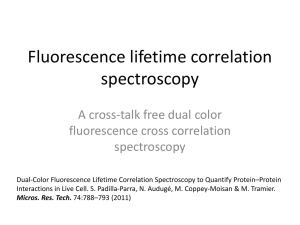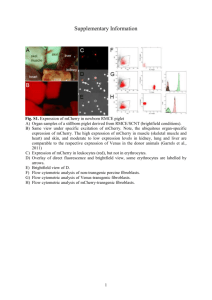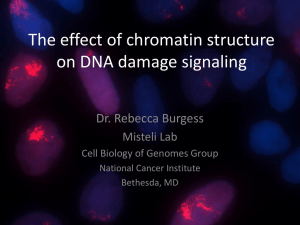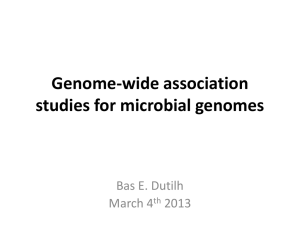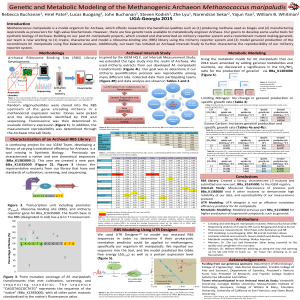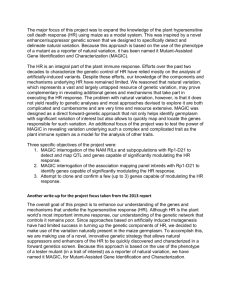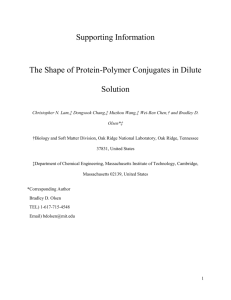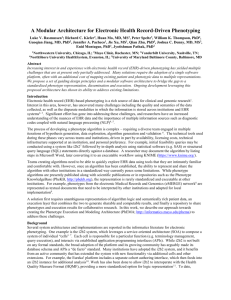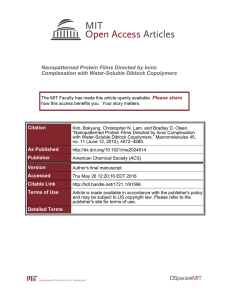Text S1 - Figshare
advertisement
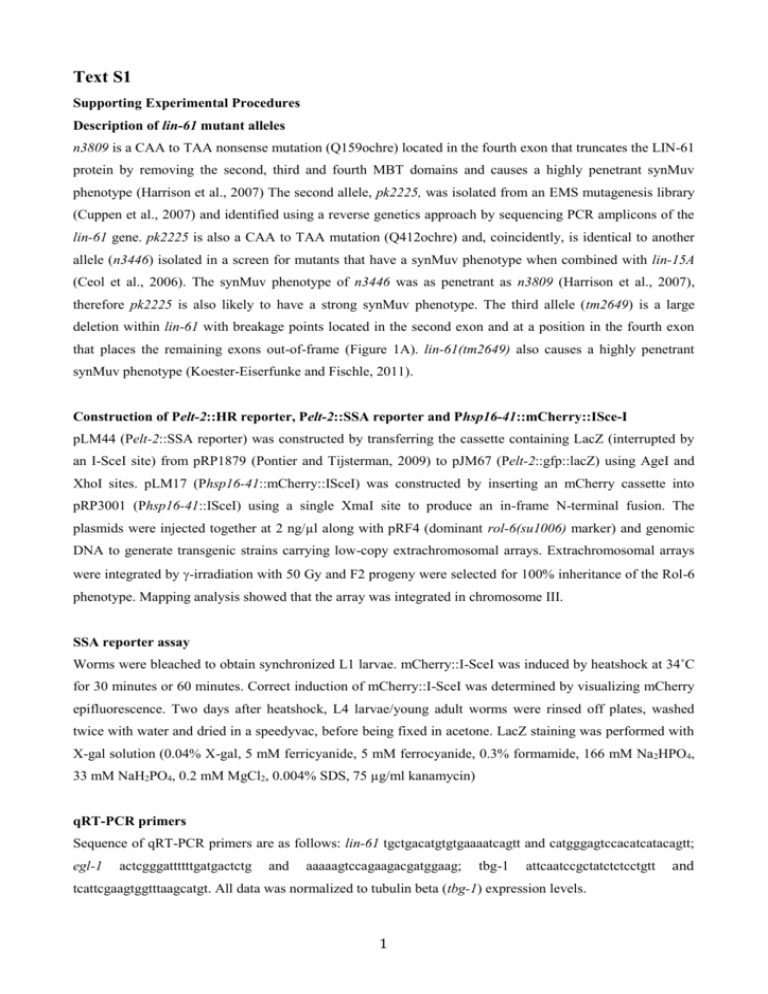
Text S1 Supporting Experimental Procedures Description of lin-61 mutant alleles n3809 is a CAA to TAA nonsense mutation (Q159ochre) located in the fourth exon that truncates the LIN-61 protein by removing the second, third and fourth MBT domains and causes a highly penetrant synMuv phenotype (Harrison et al., 2007) The second allele, pk2225, was isolated from an EMS mutagenesis library (Cuppen et al., 2007) and identified using a reverse genetics approach by sequencing PCR amplicons of the lin-61 gene. pk2225 is also a CAA to TAA mutation (Q412ochre) and, coincidently, is identical to another allele (n3446) isolated in a screen for mutants that have a synMuv phenotype when combined with lin-15A (Ceol et al., 2006). The synMuv phenotype of n3446 was as penetrant as n3809 (Harrison et al., 2007), therefore pk2225 is also likely to have a strong synMuv phenotype. The third allele (tm2649) is a large deletion within lin-61 with breakage points located in the second exon and at a position in the fourth exon that places the remaining exons out-of-frame (Figure 1A). lin-61(tm2649) also causes a highly penetrant synMuv phenotype (Koester-Eiserfunke and Fischle, 2011). Construction of Pelt-2::HR reporter, Pelt-2::SSA reporter and Phsp16-41::mCherry::ISce-I pLM44 (Pelt-2::SSA reporter) was constructed by transferring the cassette containing LacZ (interrupted by an I-SceI site) from pRP1879 (Pontier and Tijsterman, 2009) to pJM67 (Pelt-2::gfp::lacZ) using AgeI and XhoI sites. pLM17 (Phsp16-41::mCherry::ISceI) was constructed by inserting an mCherry cassette into pRP3001 (Phsp16-41::ISceI) using a single XmaI site to produce an in-frame N-terminal fusion. The plasmids were injected together at 2 ng/µl along with pRF4 (dominant rol-6(su1006) marker) and genomic DNA to generate transgenic strains carrying low-copy extrachromosomal arrays. Extrachromosomal arrays were integrated by -irradiation with 50 Gy and F2 progeny were selected for 100% inheritance of the Rol-6 phenotype. Mapping analysis showed that the array was integrated in chromosome III. SSA reporter assay Worms were bleached to obtain synchronized L1 larvae. mCherry::I-SceI was induced by heatshock at 34˚C for 30 minutes or 60 minutes. Correct induction of mCherry::I-SceI was determined by visualizing mCherry epifluorescence. Two days after heatshock, L4 larvae/young adult worms were rinsed off plates, washed twice with water and dried in a speedyvac, before being fixed in acetone. LacZ staining was performed with X-gal solution (0.04% X-gal, 5 mM ferricyanide, 5 mM ferrocyanide, 0.3% formamide, 166 mM Na 2HPO4, 33 mM NaH2PO4, 0.2 mM MgCl2, 0.004% SDS, 75 µg/ml kanamycin) qRT-PCR primers Sequence of qRT-PCR primers are as follows: lin-61 tgctgacatgtgtgaaaatcagtt and catgggagtccacatcatacagtt; egl-1 actcgggattttttgatgactctg and aaaaagtccagaagacgatggaag; tbg-1 attcaatccgctatctctcctgtt tcattcgaagtggtttaagcatgt. All data was normalized to tubulin beta (tbg-1) expression levels. 1 and L1 larvae IR assay Assay was performed as in Bailly et al 2010 but L1 worms were obtained by bleaching rather than from growing populations using Millipore filters. References Ceol, C.J., Stegmeier, F., Harrison, M.M., and Horvitz, H.R. (2006). Identification and classification of genes that act antagonistically to let-60 Ras signaling in Caenorhabditis elegans vulval development. Genetics 173, 709–726. Cuppen, E., Gort, E., Hazendonk, E., Mudde, J., van de Belt, J., Nijman, I.J., Guryev, V., and Plasterk, R.H.A. (2007). Efficient target-selected mutagenesis in Caenorhabditis elegans: toward a knockout for every gene. Genome Res 17, 649–658. 2
